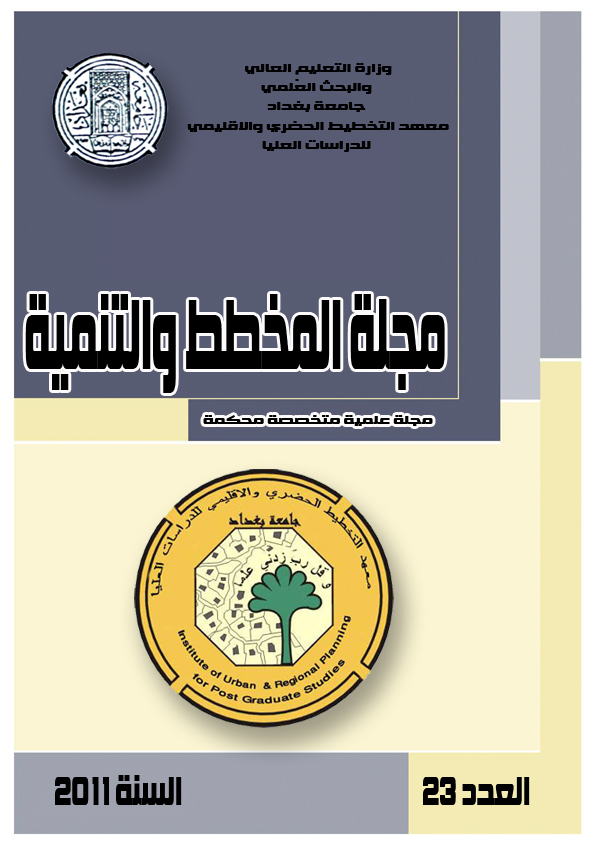Abstract
Most of the mosques in the Islamic world fall under specific and known forms and patterns to a large extent, and such patterns have grown and evolved from the few basic and uniform models, but they changed slowly due to the impact with a mixture of changing functional requirements and cultural landscapes because of the variables of time and place to form patterns known and famous in this day across parts of the Islamic world and its borders. There was no exception to these patterns, but small numbers of mosques that were probably the result of personal experiences or improvisational resolutions, or in response to specific or temporary stimuli. However, the emergence of a specific pattern which does not belong to any of these patterns, but opposes it in founded design and planning, and the spread of this new style - surprisingly - in a vast area, and its appearance clearly and strikingly , is really visible phenomenon worthy of attention, study and investigation. The emergence of the problem of this research is by observing a specific pattern of the mosques characterized by differences evident in the features of the general planning - a combination of the distribution of events in the schemes of the mosques - and the details of architectural form - external and internal – and its functional formation such as the nature related to functional components of those mosques with each other which distinguish this style of mosques of any known pattern of common patterns of mosques throughout the world, and the Islamic world in particular, and within a certain area which is province of Sulaymaniyah, and in particular its position and a specific time period which lasted for two or three decades. Hence the idea of this research to study the pattern of an updated planning and architecture of mosques bearing the features that distinguish them from normal patterns of mosques, as this work attempts to ascertain the causes and variables that called for the emergence of such a pattern, assuming a range of cultural influences and natural reasons for this phenomenon based on the study of models and samples selected randomly from those mosques in the period of time specified by the search for the consideration of the statistical implications on one hand and the study of the determinants of design in those models on the other hand and that to know the most influential elements in causing these changes that generated the problem of this research which led to the emergence of this un ique style that characterized the mosques of this region from other mosques in the Islamic world.
Abstract
تندرج معظم المساجد والجوامع في العالم الاسلامي تحت نماذج وانماط محددة ومعروفة الى حد كبير، وكانت تلكم الانماط قد نمت وتطورت من نماذج اساسية قليلة وموحدة، تغيرت شيئا فشيئا بسبب تاثّرها بمزيج من المتطلبات الوظيفية والثقافية المتغيرة هي الاخرى بسبب متغيرات الزمان والمكان، لتشكل مجموعة الانماط المعروفة والمشهورة في يومنا هذا عبر اجزاء العالم الاسلامي وحدوده. ولم يشُذَّ عن هذه الانماط الا اعداد قليلة من المساجد التي ربما كانت نتاج تجارب شخصية او قرارات ارتجالية، او استجابة لمؤثرات محددة او مؤقتة. الا ان ظهور نمط محدد لاينتمي الى ايّ من تلك الانماط، بل ويخالفها في اسسها التصميمية والتخطيطية، وانتشار هذا النمط الجديد –الغريب- في مساحة شاسعة، وظهوره وتميزه بشكل واضح وملفت للنظر، لهي حقا ظاهرة واشكالية جديرة بالانتباه والدراسة والتقصي. وكان ظهور مشكلة هذا البحث هي من خلال ملاحظة نمط معين من المساجد اتصف باختلافات واضحة في سماته التخطيطية العامة -كتركيبة توزيع الفعاليات في مخططات تلك المساجد-، وتفاصيله المعمارية الشكلية –الخارجية والداخلية-، وتشكيله الوظيفي كطبيعة علاقة المكونات الوظيفية لتلك المساجد مع بعضها-، بشكل يميز هذا النمط من المساجد تماما عن اي نمط معروف من انماط المساجد الشائعة في عموم العالم، والعالم الاسلامي خصوصا، وضمن منطقة معينة –هي محافظة السليمانية، (وفي مركزها تحديدا) ولفترة زمنية محددة دامت لعقدين او ثلاث. ومن هنا كانت فكرة هذا البحث في دراسة نمط مستحدث تخطيطيا ومعماريا لمساجد وجوامع تحمل معالم تميزها عن الانماط المعتادة للمساجد، اذ يحاول هذا البحث معرفة الاسباب والمتغيرات التي دعت الى ظهور مثل هذا النمط، مفترضا مجموعة من المؤثرات الثقافية والطبيعية سببا لهذه الظاهرة الملفتة. معتمدا على دراسة نماذج وعينات مختارة عشوائيا من تلك المساجد المحددة بالفترة الزمنية التي يحددها البحث لدراستها من خلال الدلالات الاحصائية من جهة ودراسة المحددات التصميمية في تلك النماذج من جهة اخرى وذلك لمعرفة اكثر العناصر تاثيرا في احداث تلك التغييرلت التي ولدت مشكلة هذا البحث. والتى ادت الى ظهور هذا النمط الفريد الذي ميز مساجد هذه المنطقة عن سواها من المساجد في العالم الاسلامي.
